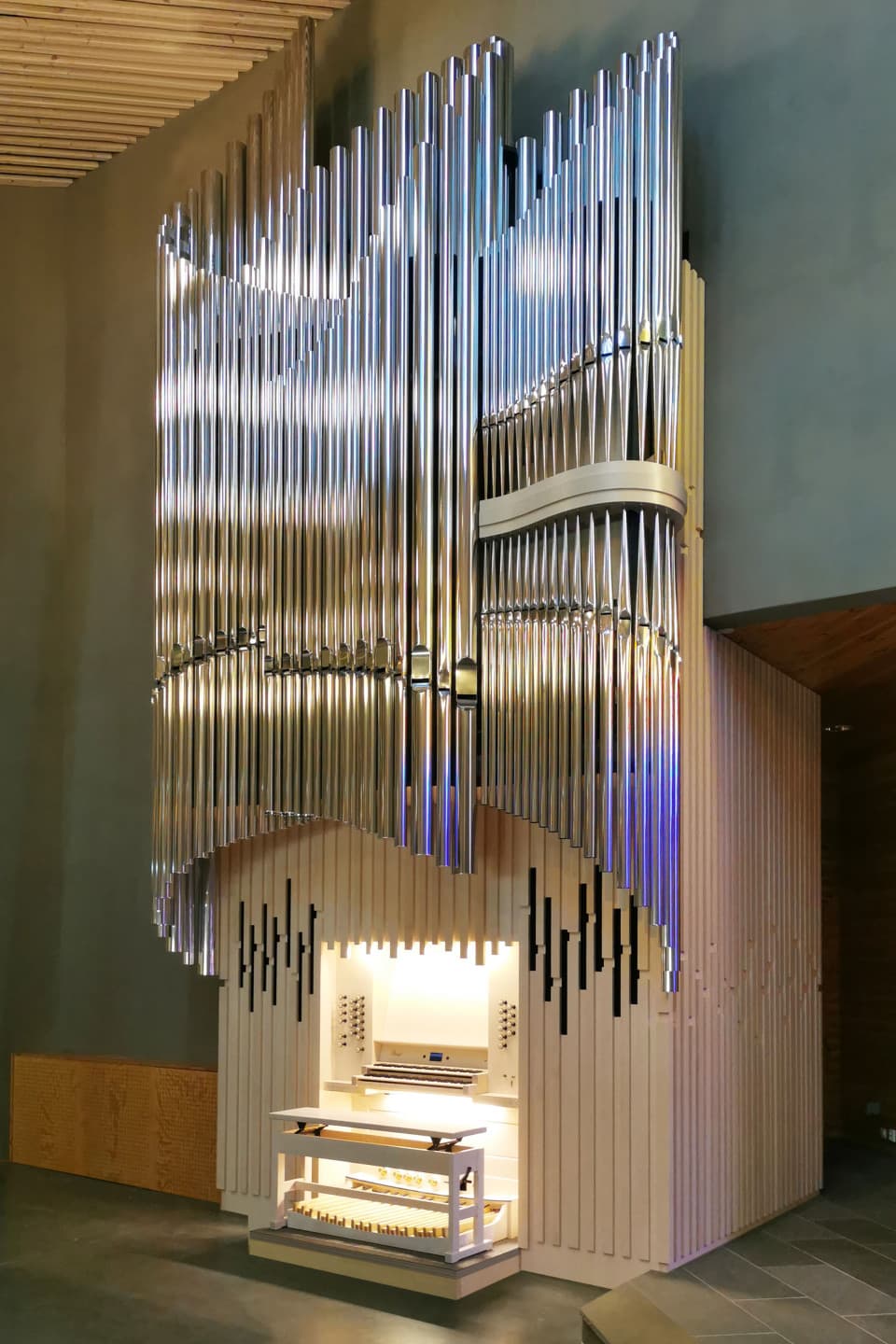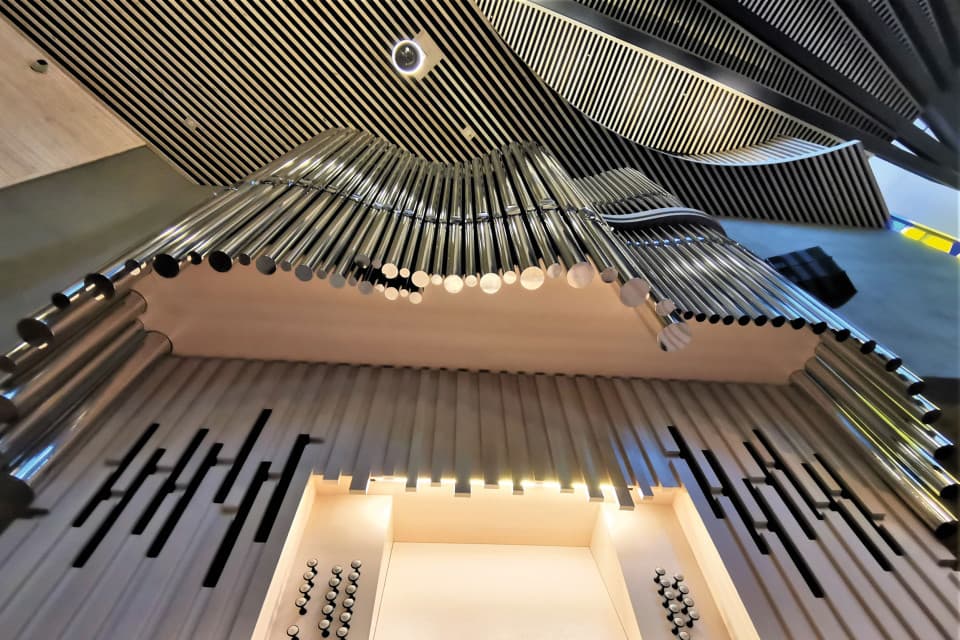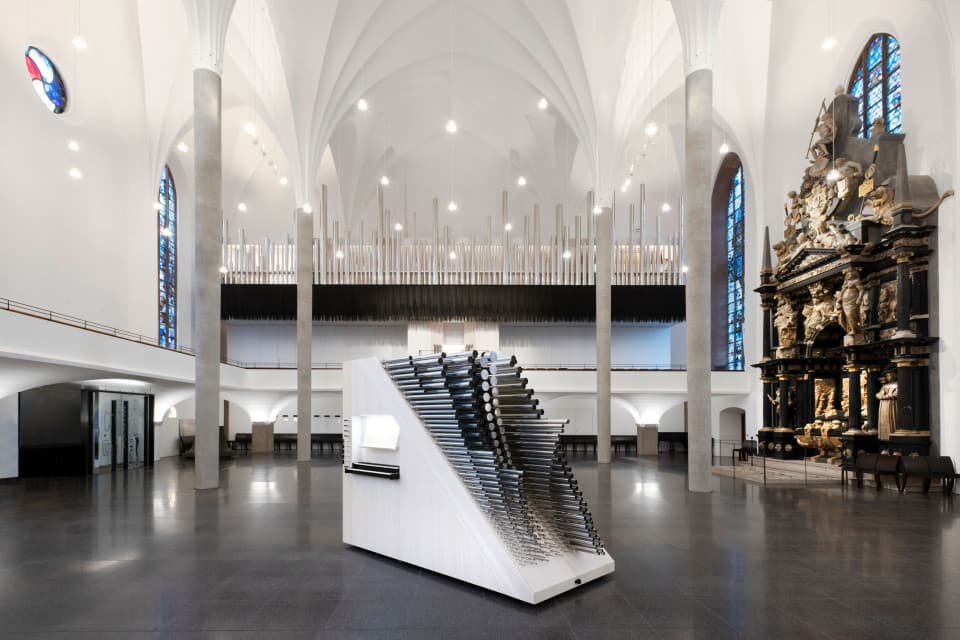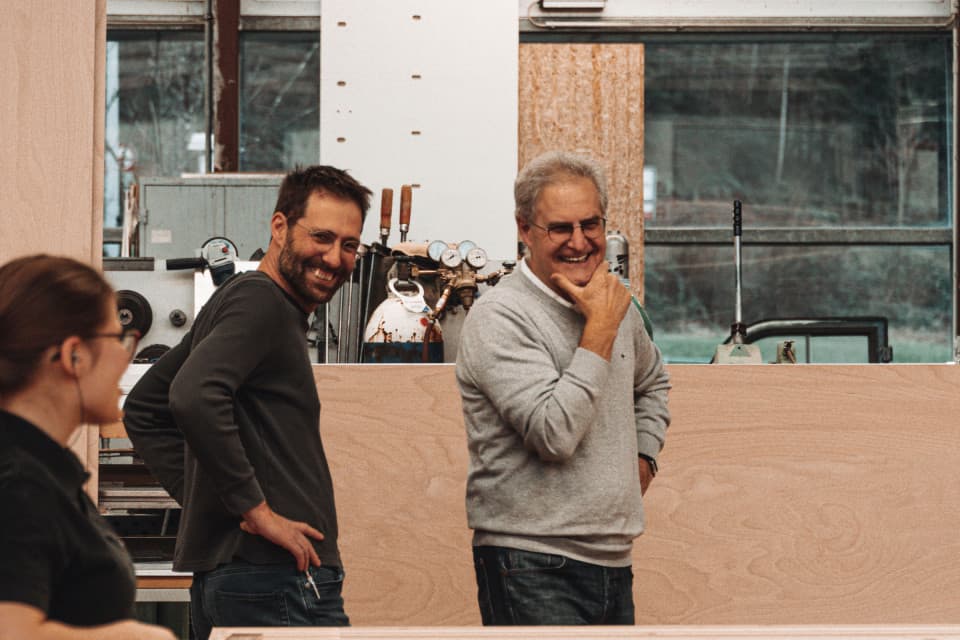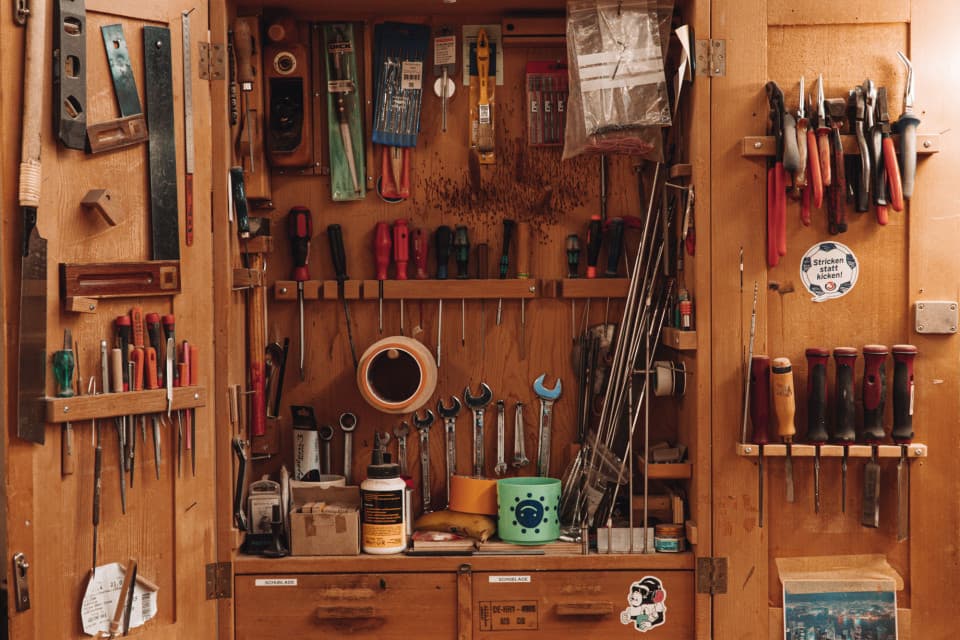An organ half outdoors – the new concert hall in Springwoods (China)
The building is spectacular: the new concert hall in Heyuan Guangdong (‘Springwoods’) China, rises up towards the lake and is open like a pavilion. The architecture concentrates the sound, so that the organ can be heard clearly and distinctly not only in the hall, but even in the adjacent park. A fascinating and unusual project.
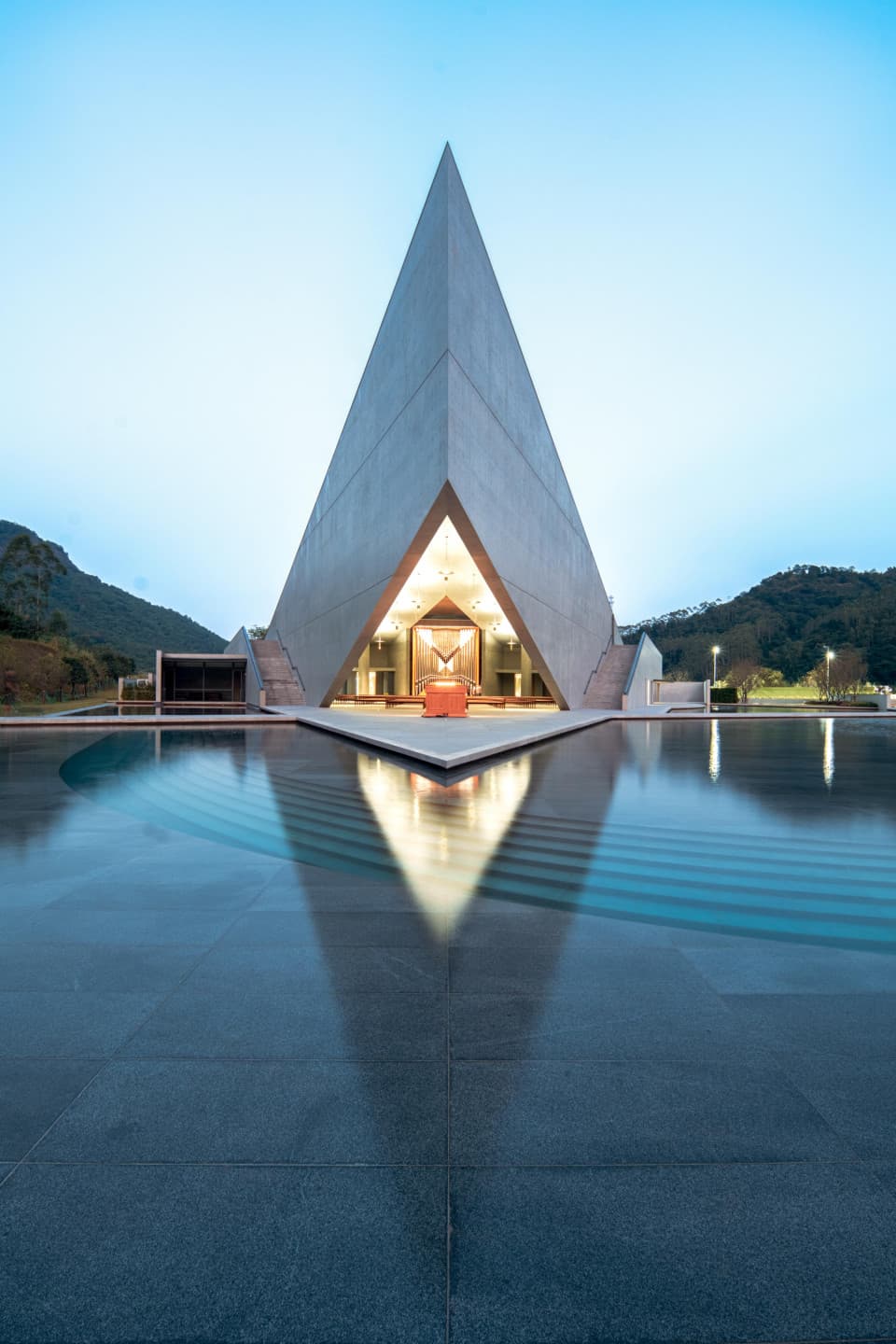
Heyuan Guangdong, China (Springwoods)
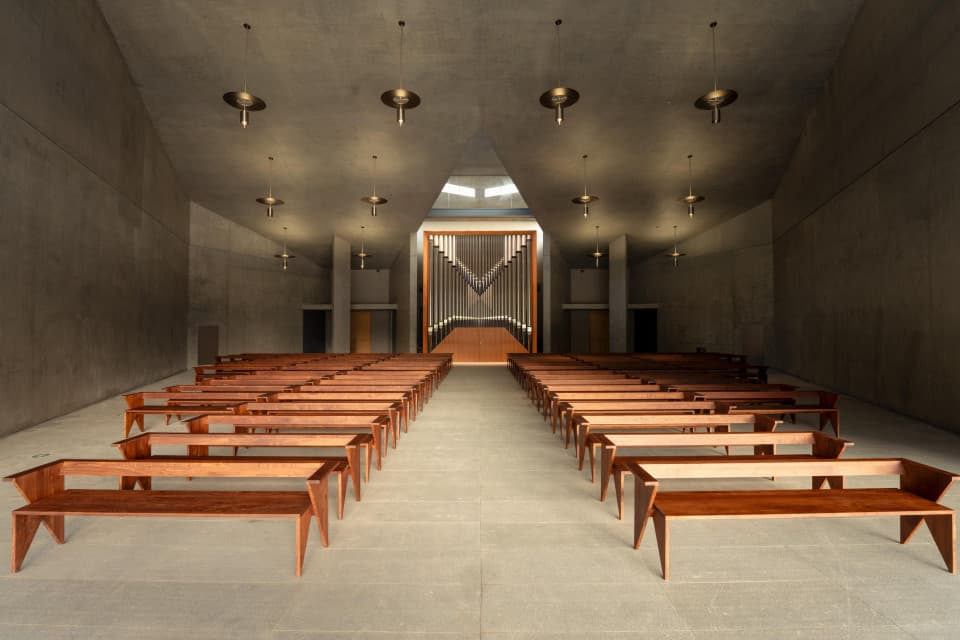
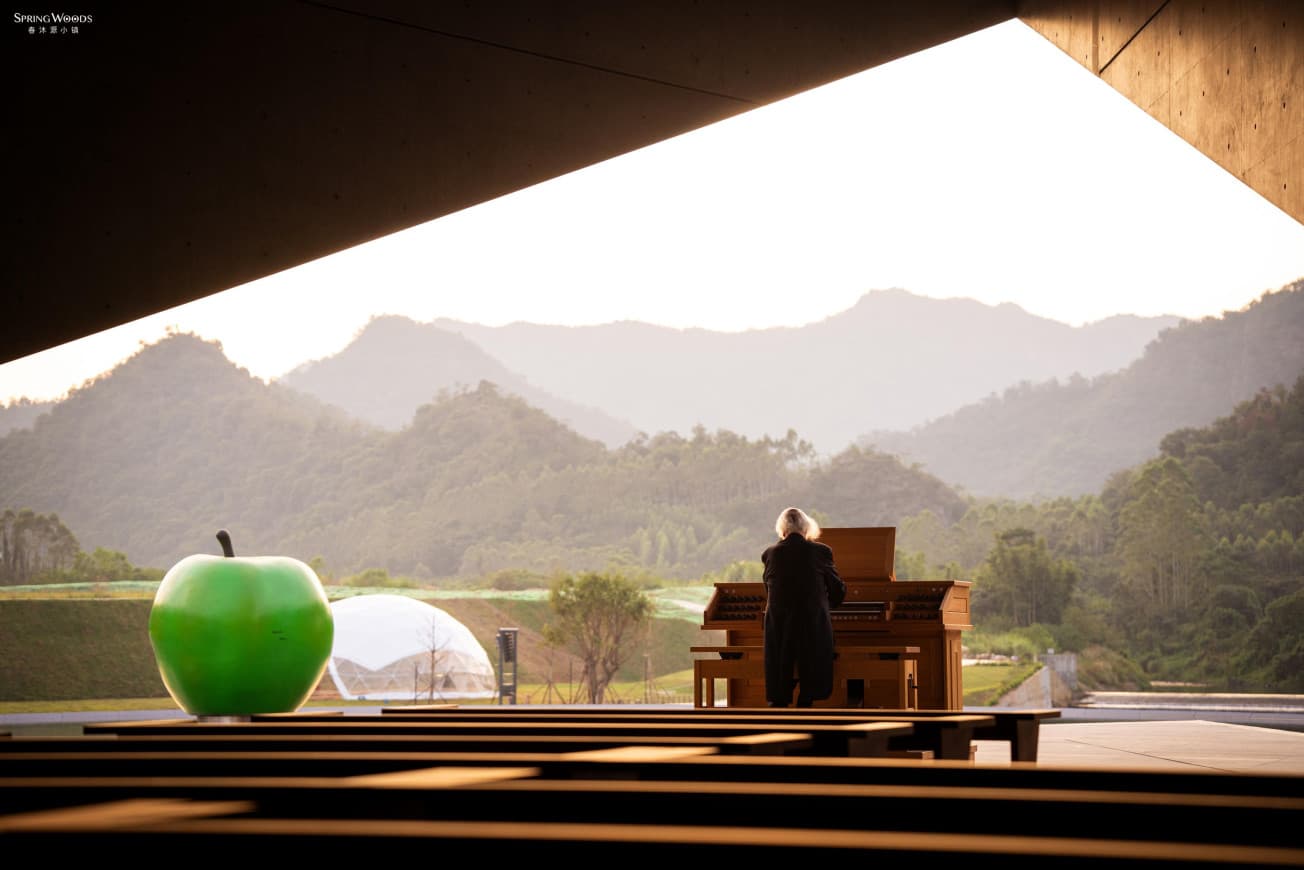
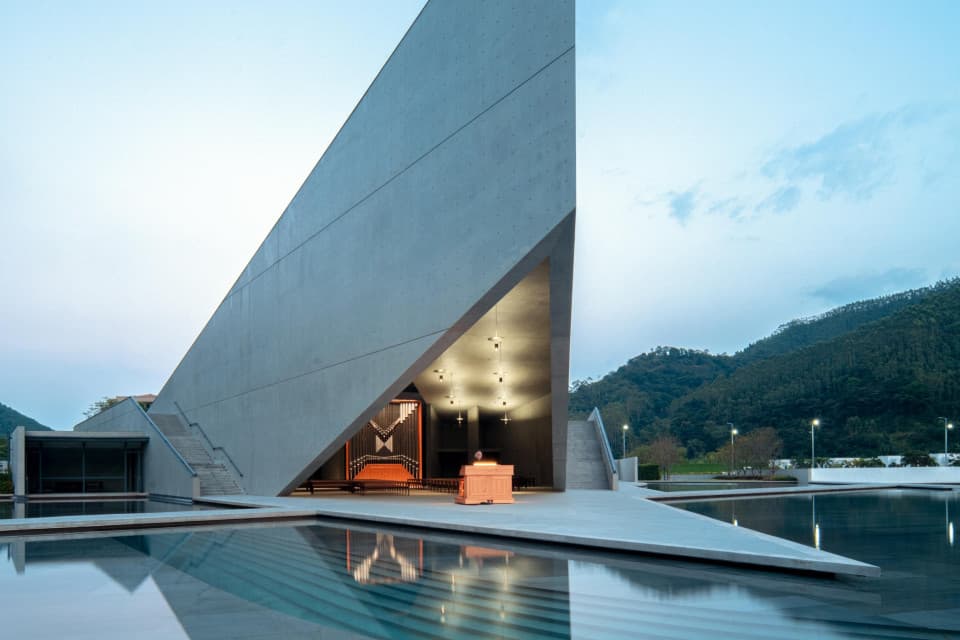
Frankfurt University of Music and Performing Arts
The new teaching and practice organ at the Frankfurt University of Music and Performing Arts (25/III) fully meets the diverse stylistic and thematic requirements of a university in terms of teaching, practice situations and concerts in its specifications, voicing and construction (e.g. slanted console for chamber music and continuo playing).
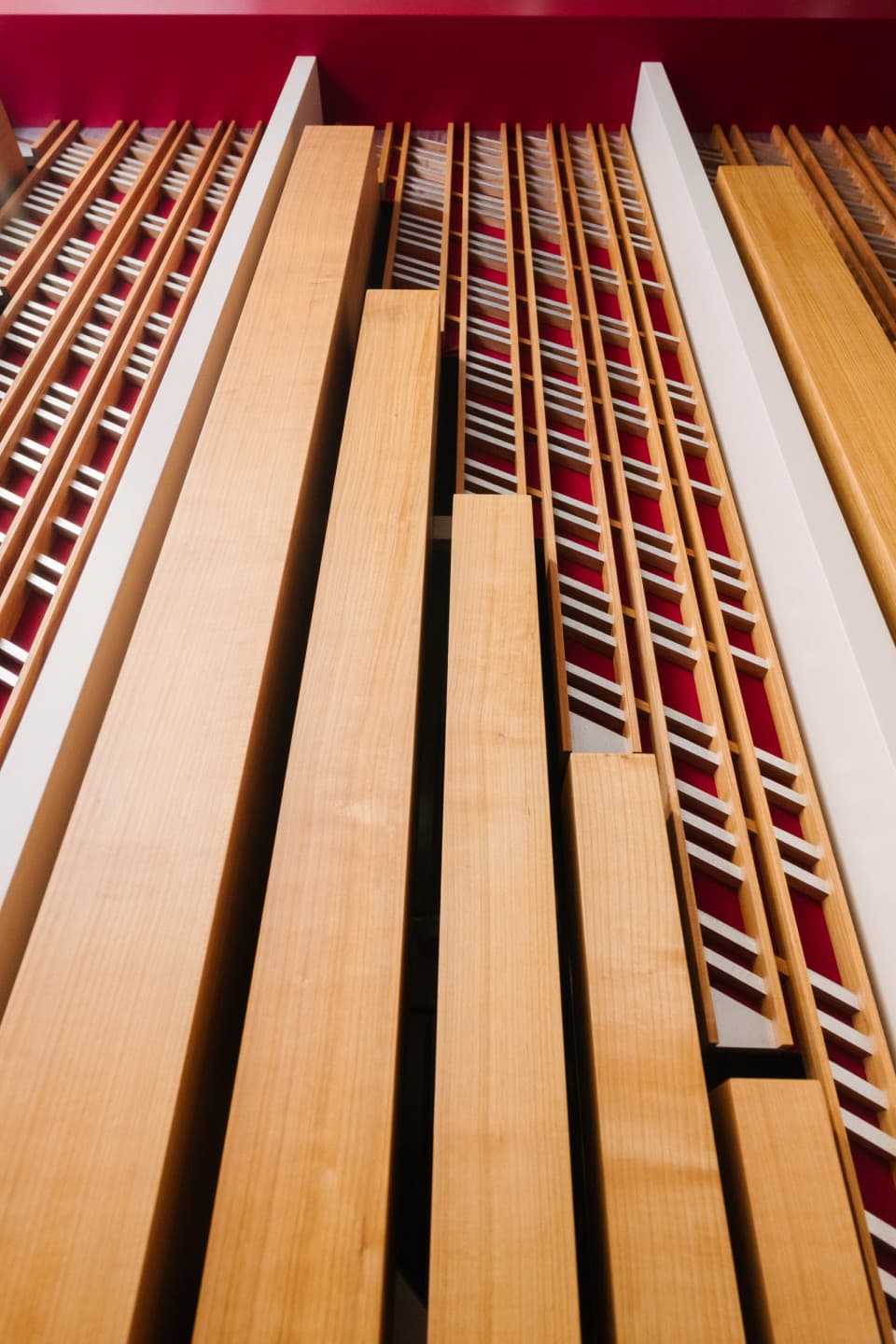
The new teaching, practice and concert organ at the Frankfurt University of Music and Performing Arts
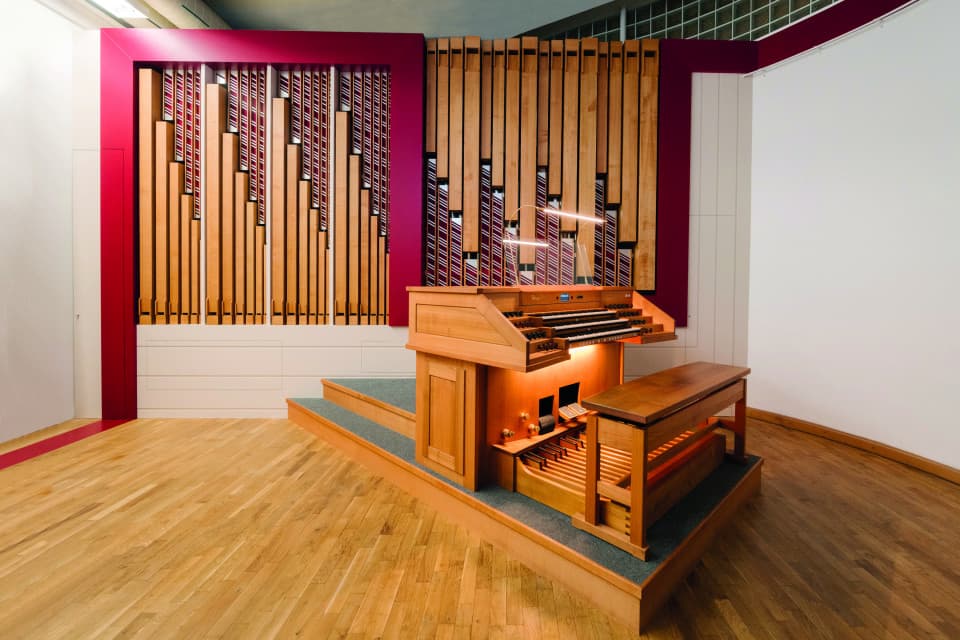
The new organ of the Herz Jesu parish church in Lenzburg (Switzerland)
On 19 June 2025, Bishop Felix Gmür of Basel inaugurated the new Rieger organ (48/III) of the Herz Jesu parish church in Switzerland during a solemn pontifical mass.
The organ is designed to perform a wide range of liturgical tasks and thus also to offer the greatest possible musical versatility.
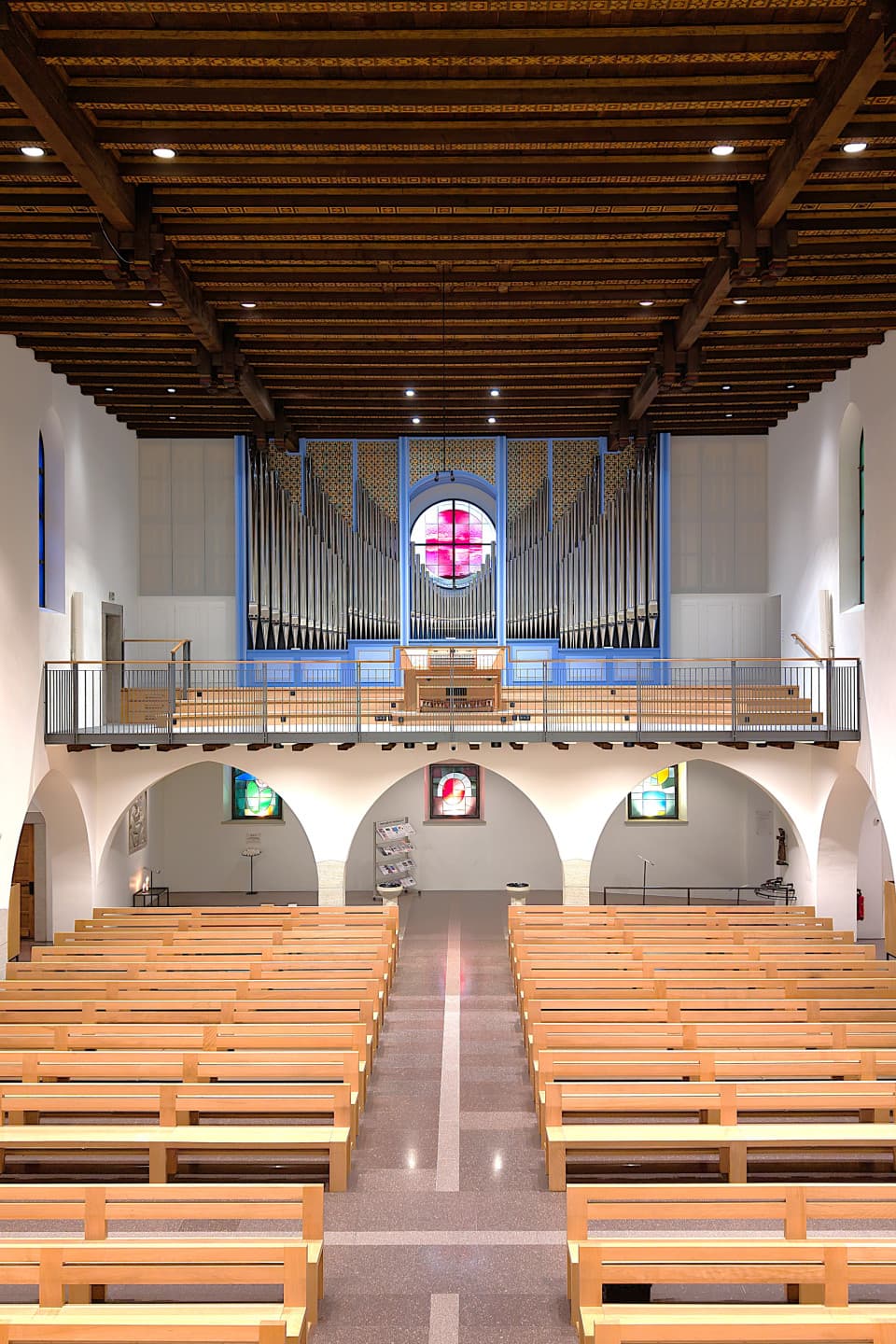
Herz Jesu parish church in Lenzburg (Switzerland)
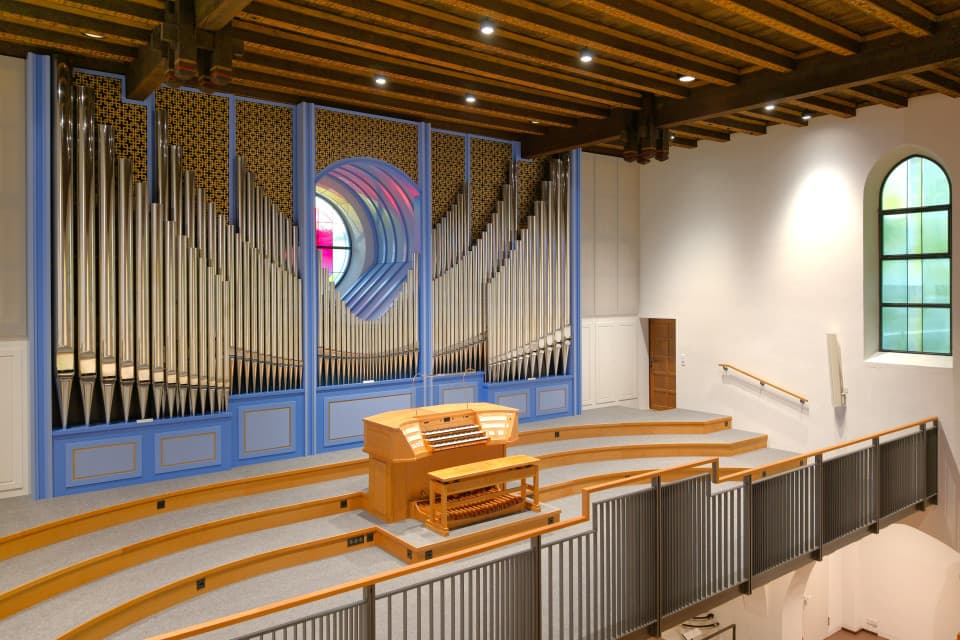
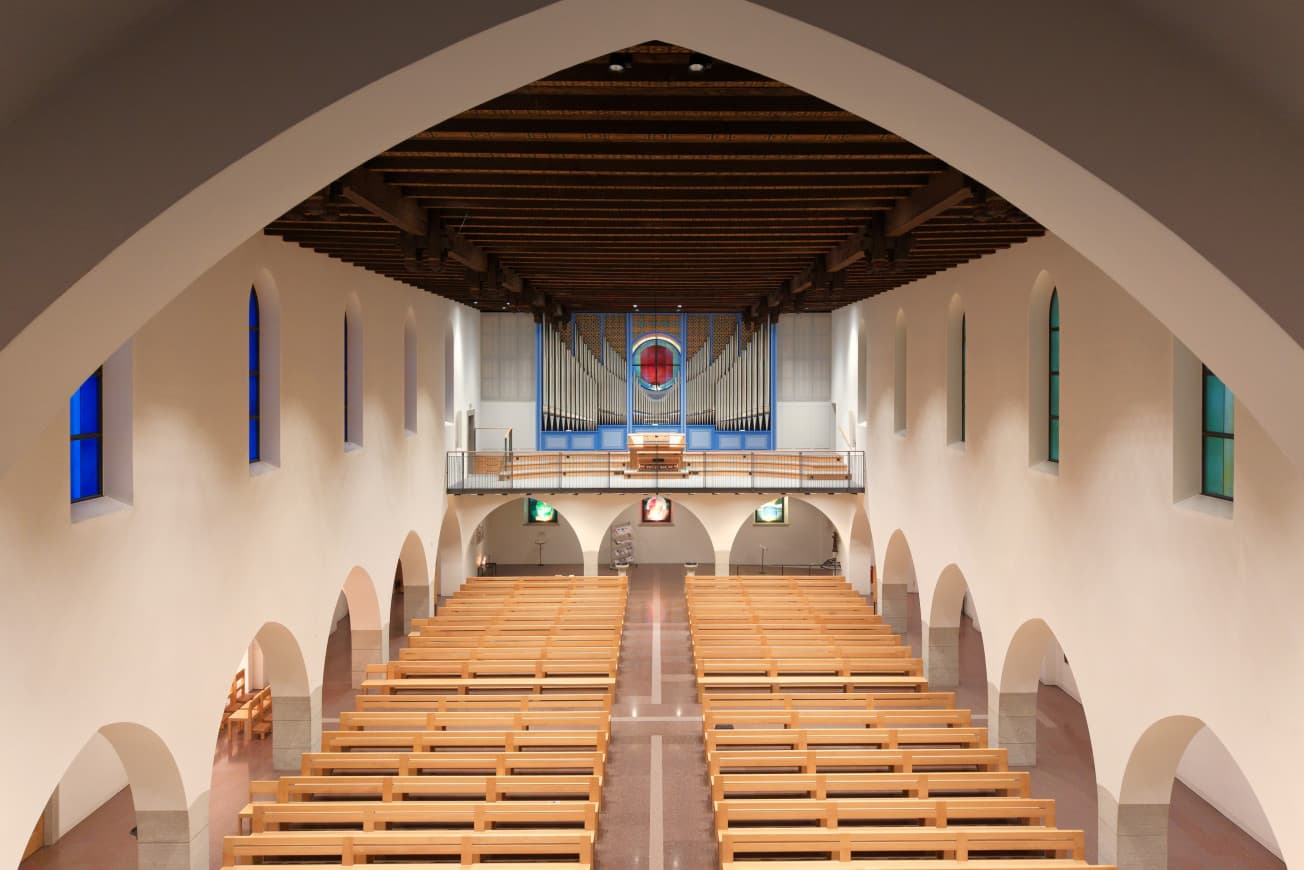
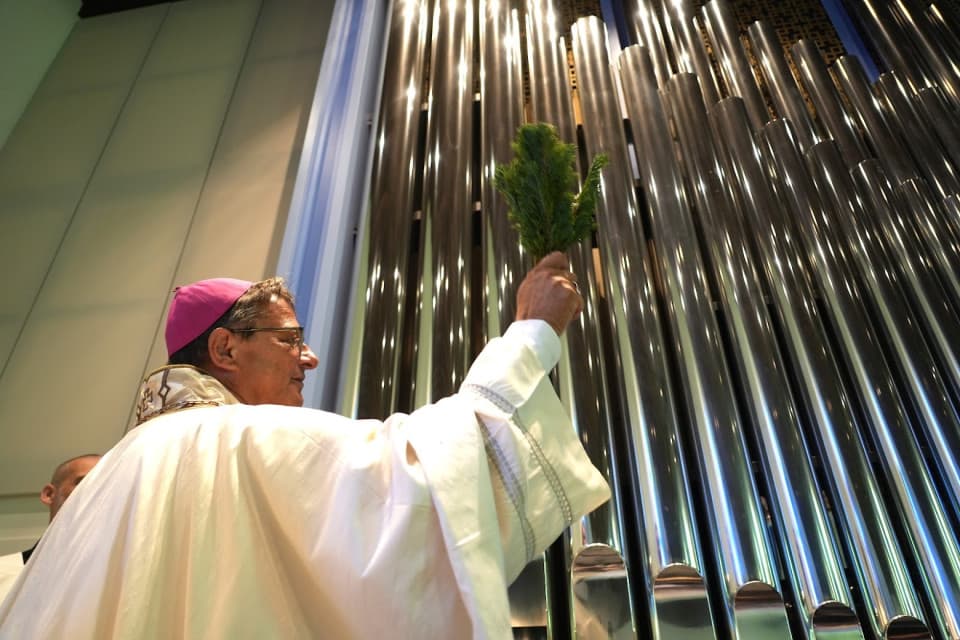
The rebirth of an organ
The former organ of the Reute monastery in Upper Swabia, southern Germany, had to be dismantled and sold when the church was decommissioned. Now it is beginning its second life as organ (19/II) of the parish church of St. Sebastian in Rohrbach near Mattersburg in Burgenland, Austria.
The organ was given a new façade and a new organ case – otherwise, all the details of the melodious former monastery organ were retained.
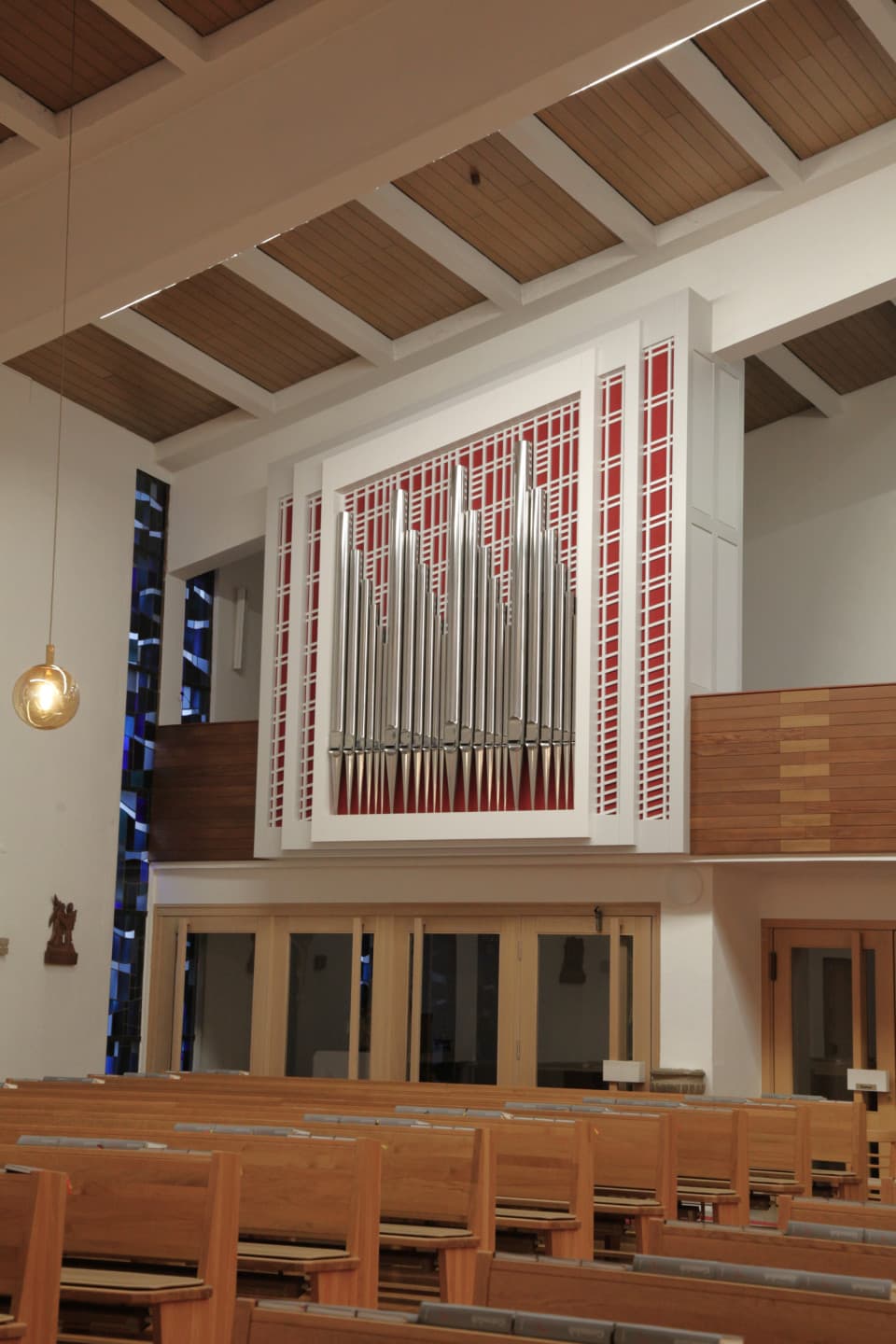
The former Reute monastery organ is now the organ of the parish church in Rohrbach in Burgenland.

The new organ at the Frankfurt University of Music and Performing Arts.
Versatility is the most important feature of a university organ that is used for teaching, practising and concerts – without compromising on sound. To facilitate the genre of organ chamber music, which is equally important in the courses, the mechanical console was placed at an angle in front of the organ.
The design is also original: the distinctive red line that leaves the organ on the left runs across the floor and walls throughout the entire room and returns to the front on the right.
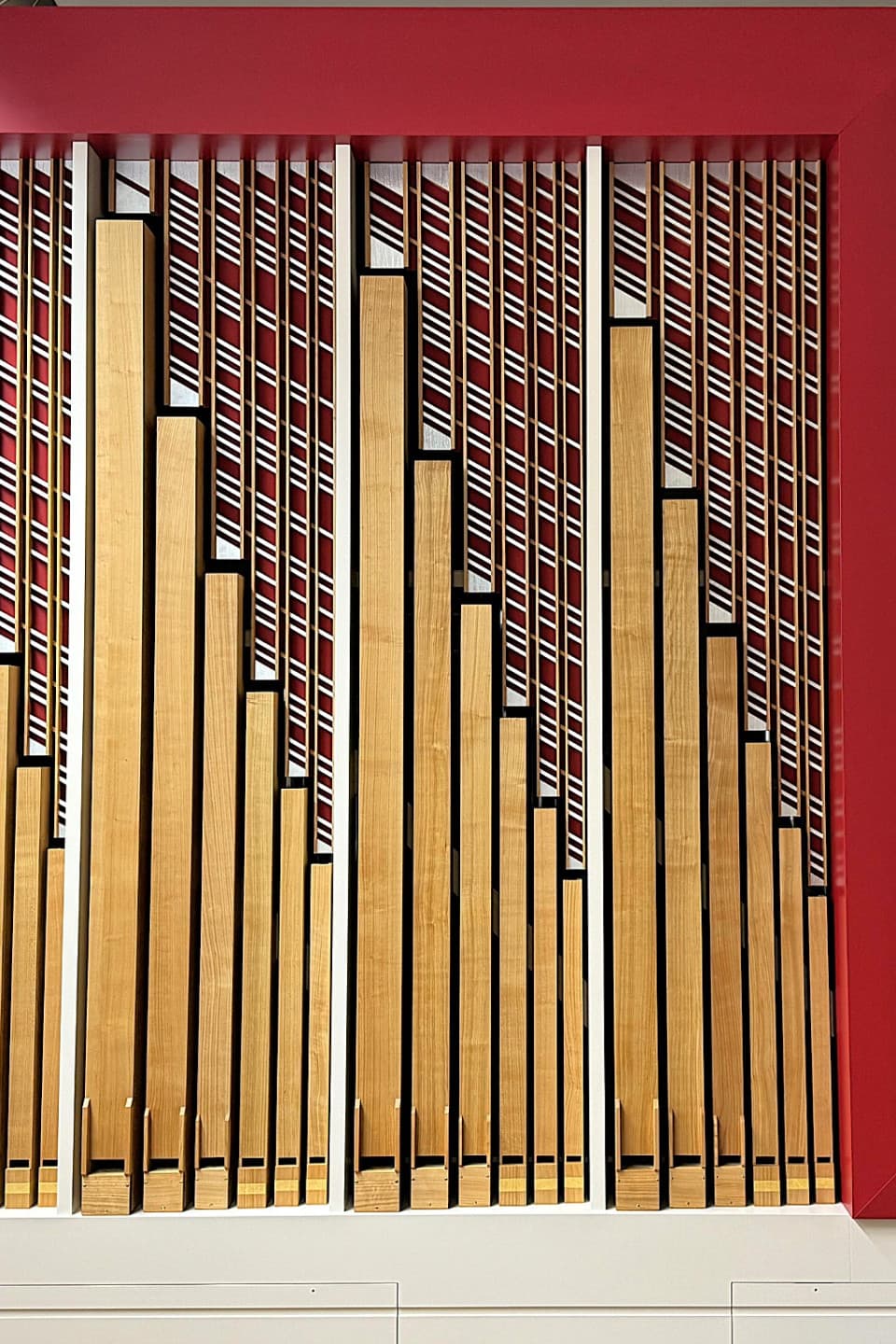
The design of the new organ at the Frankfurt University of Music and Performing Arts.
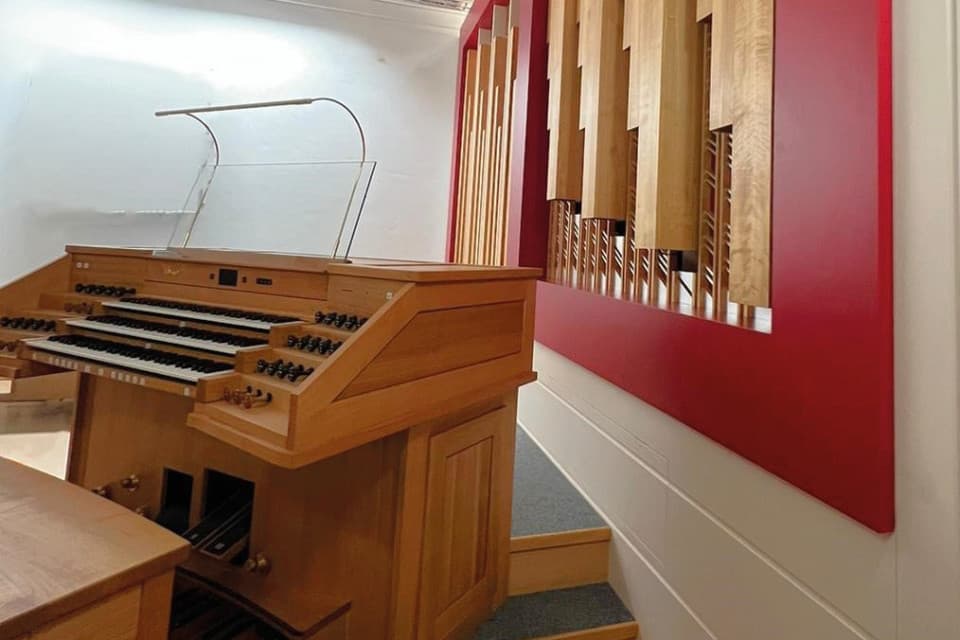
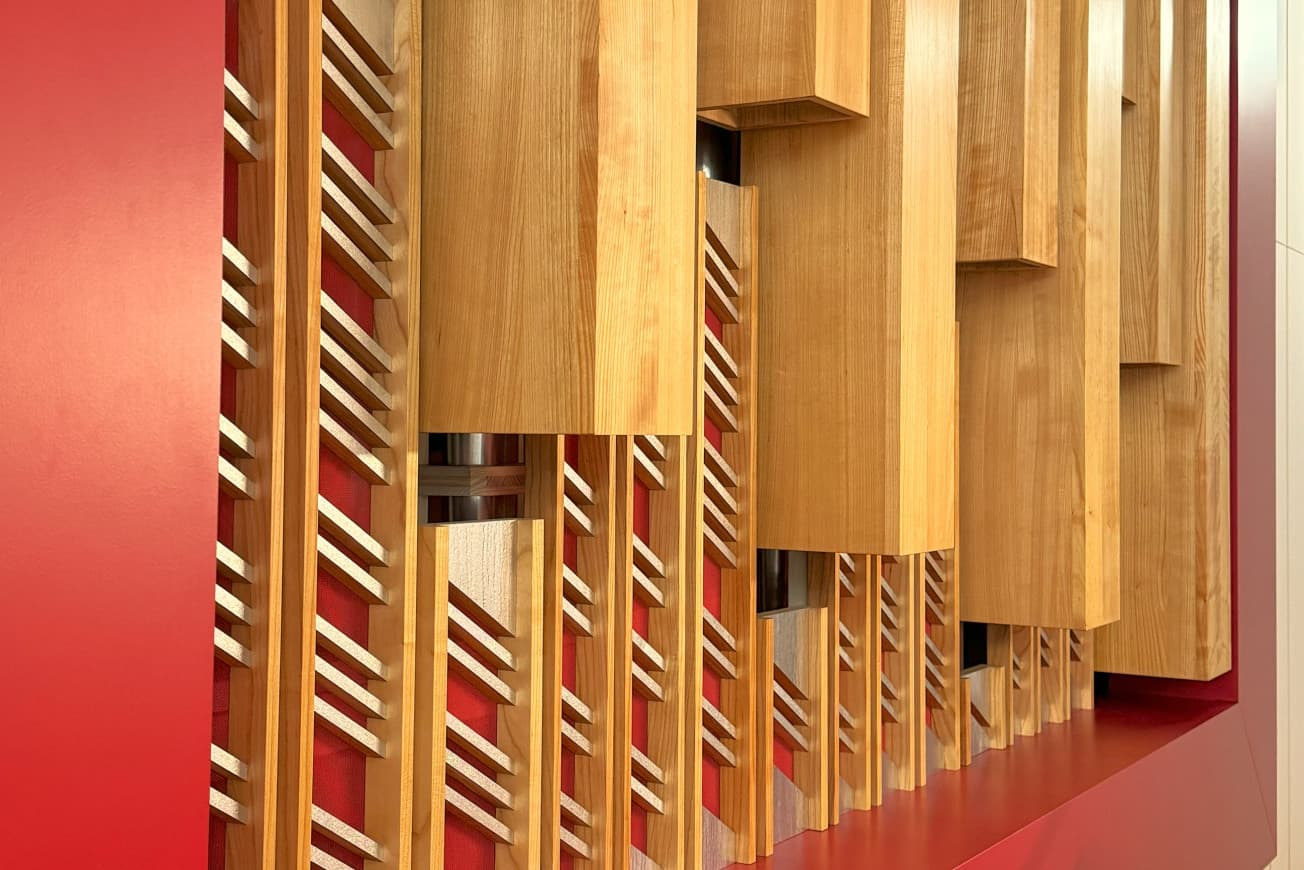
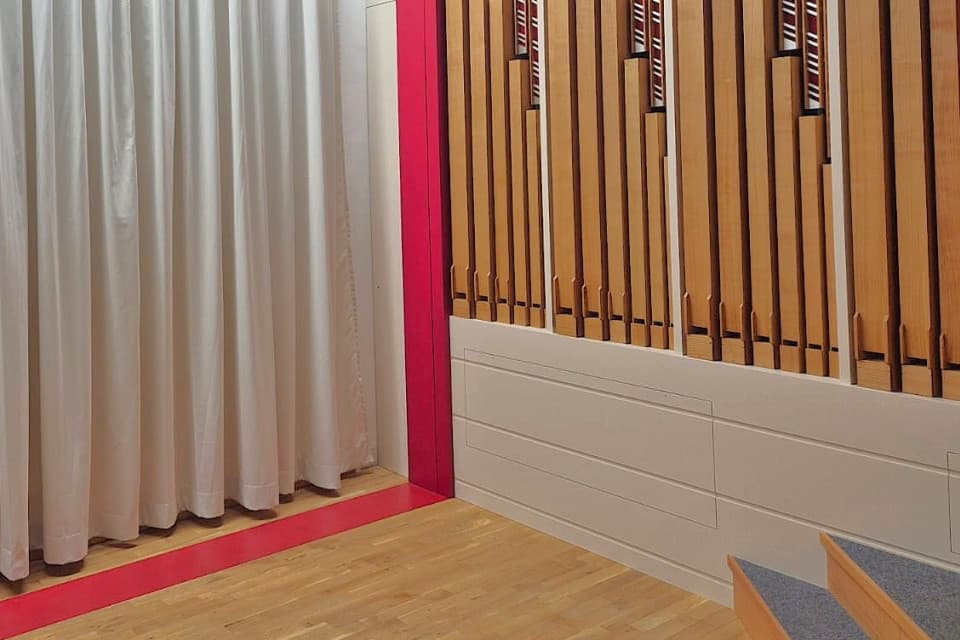
First Rieger organ in Madrid (92/IV)
The new symphonic Rieger organ (GRAN ÓRGANO SINFÓNICO) was inaugurated in the Basilica and Monastery Church of Jesús de Medinacaeli in Madrid, Spain, on 24 November 2024. In all the divisions, a good half of the stops from the previous instrument by Juan Durte from 1892 have been retained.
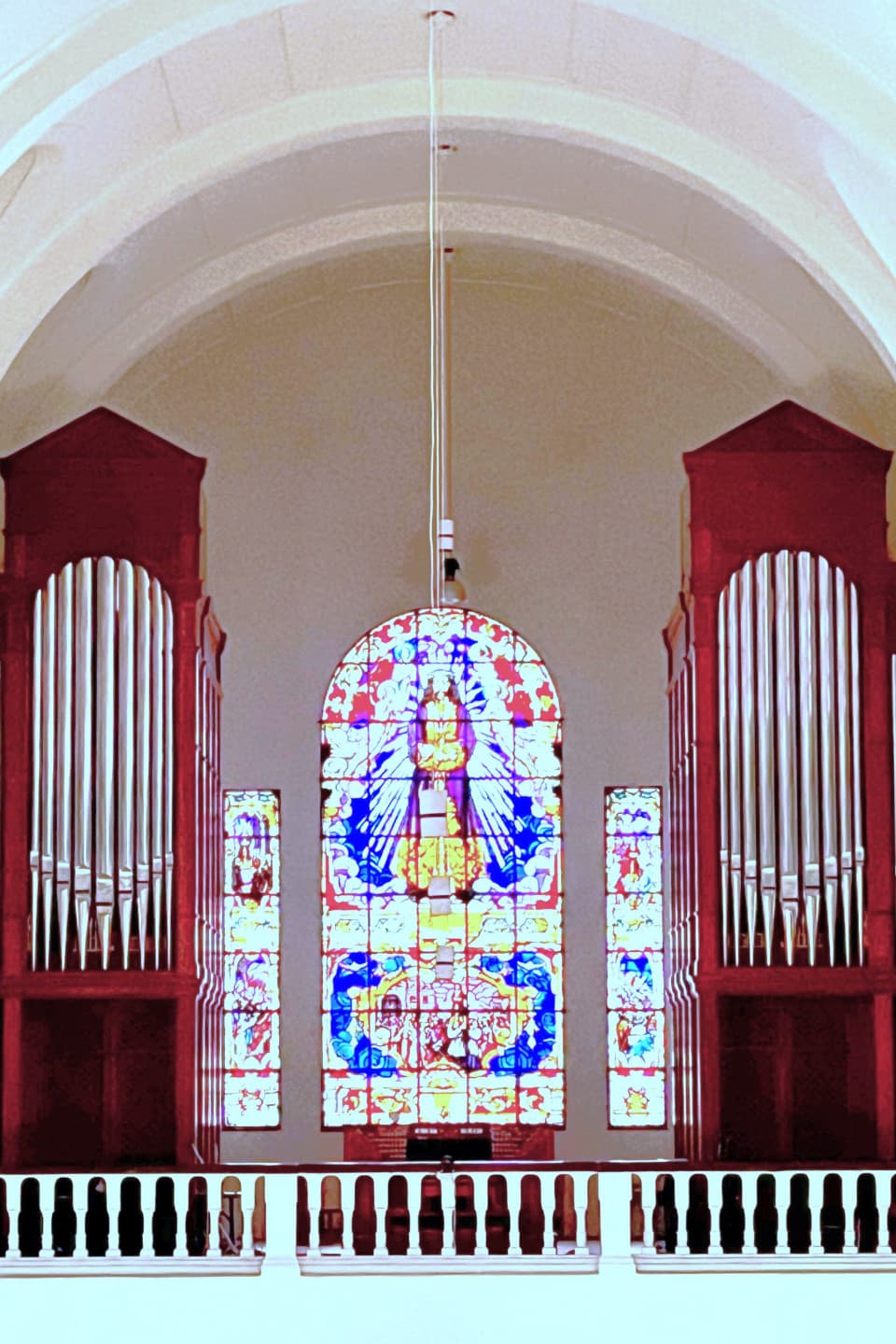
New Basilica organ in the monastery of Medinacaeli in Madrid
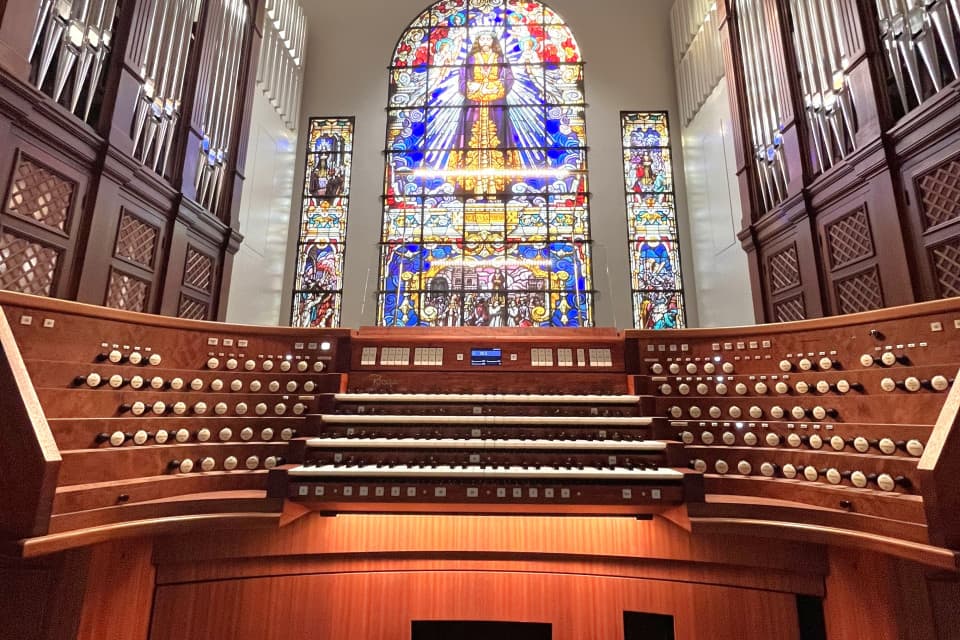
St Michael's, Munich (Jesuit Church) - Choir organ (22/II)
On the Sunday after Easter (7 April 2024), the new choir organ at St. Michael's Jesuit Church in Munich was inaugurated. Alongside the main organ by Rieger from 2011 (75/IV), it now opens up new possibilities for liturgical celebrations, especially as all choirs and ensembles mostly sing in the choir area. The organ has a very fundamental tone and a more German-romantic disposition.
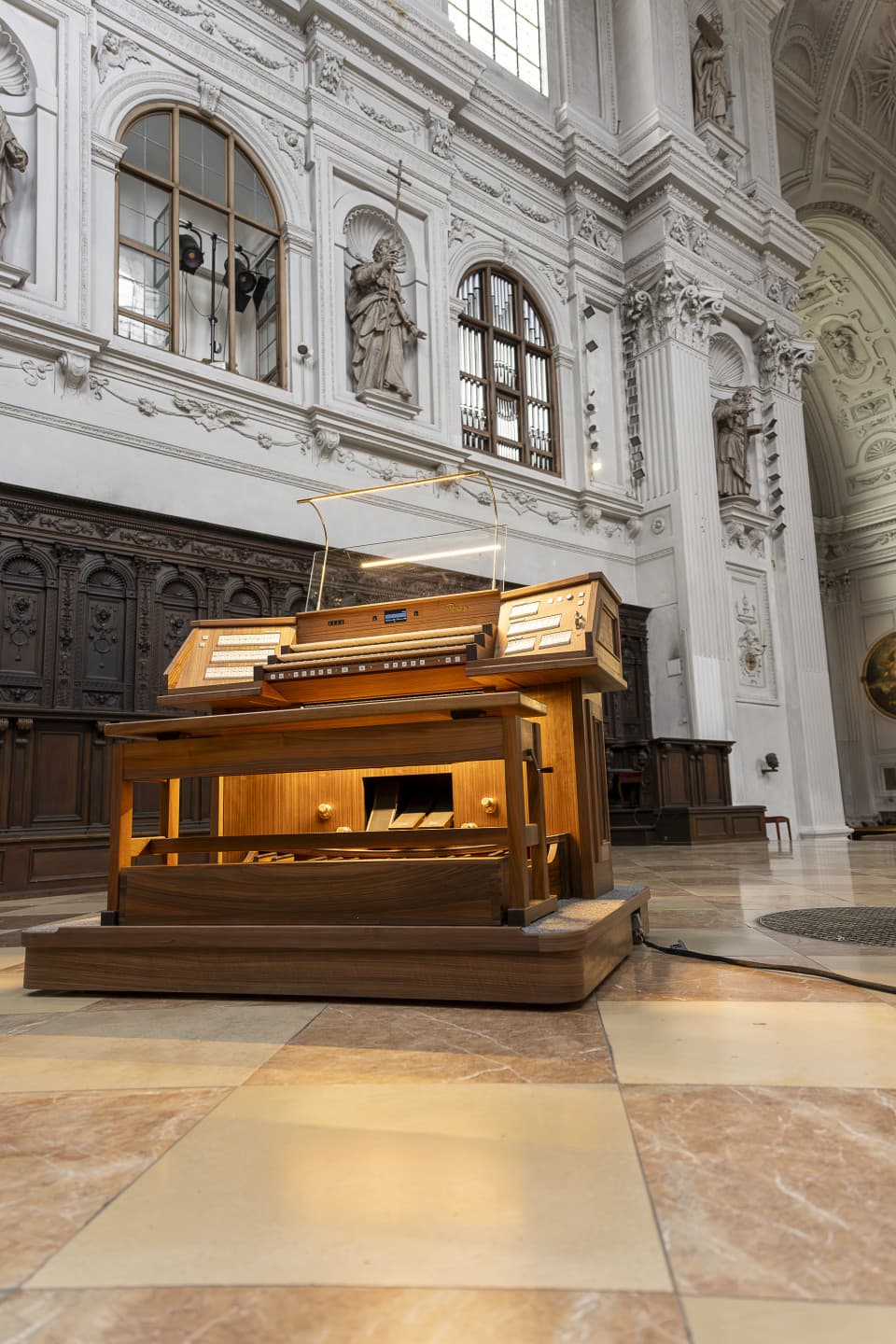
Choir organ (22/II), St Michael's, Munich
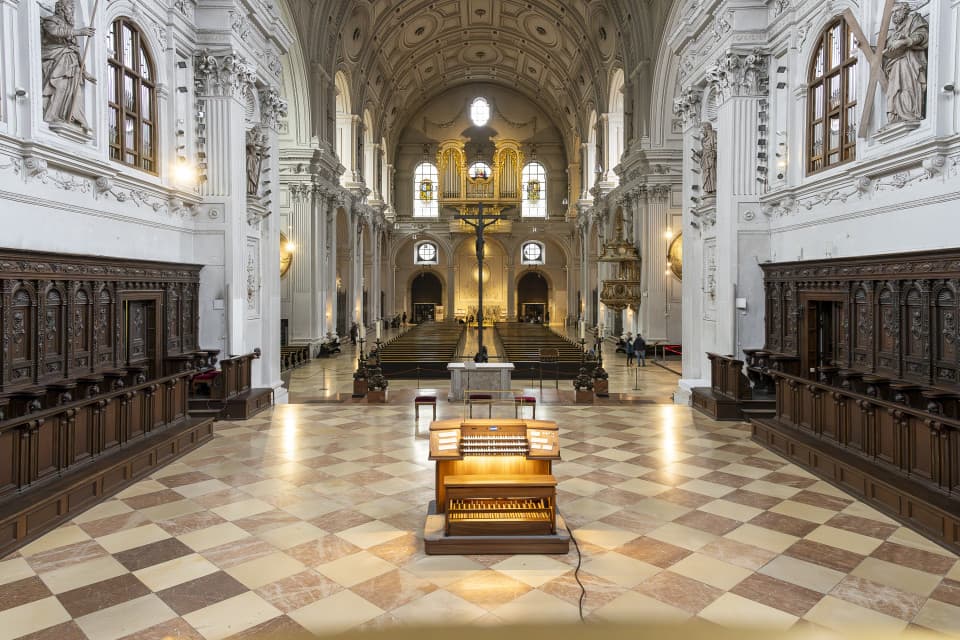
ST. MARTIN, L'ISLE ADAM (FRA), 37/III
The new Rieger organ in the historic parish church of St Martin in L'Isle Adam was inaugurated shortly before Easter 2024. The organ is divided into two parts: two swellable divisions are located in a new but historicising case in the gallery, while the second part is hidden from view behind the high altar. the organ was built on the basis of a multiplex system. The console is at ground level near the altar. In terms of sound, the organ is extremely versatile - despite its naturally French orientation.
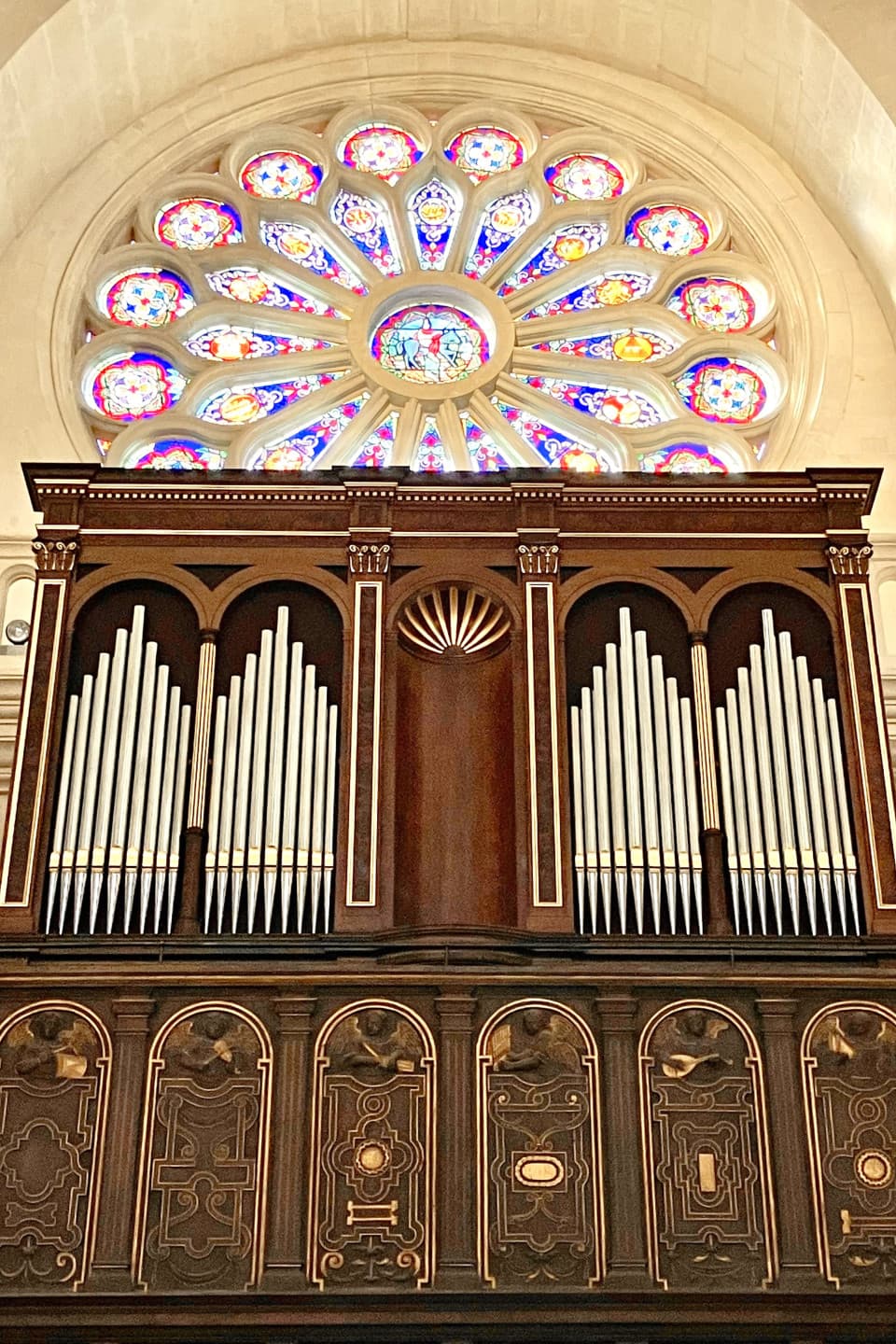
L'Isle Adam (FRA), St. Martin
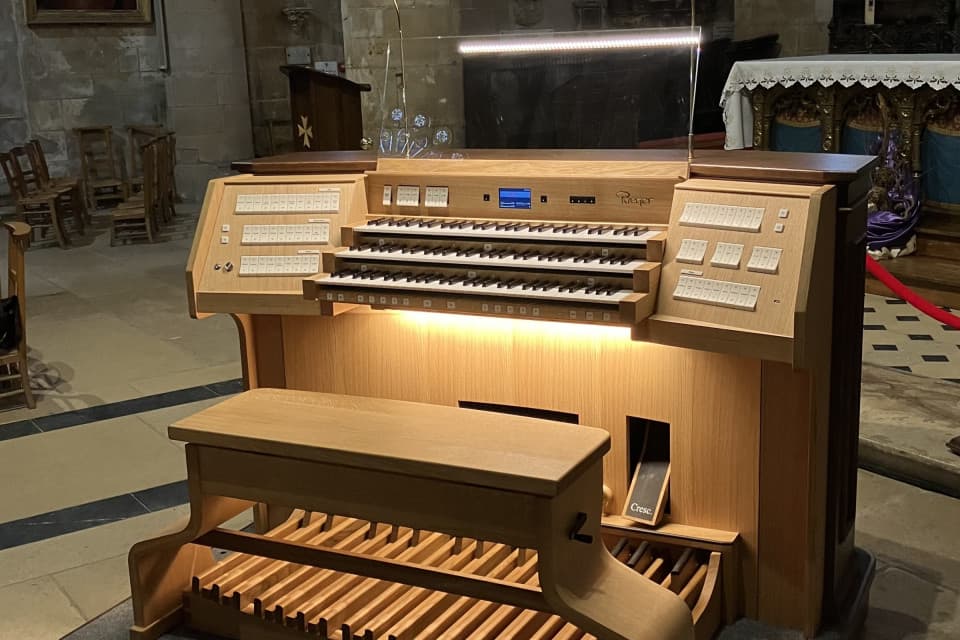
Music Center, Helsinki (FI)
The so-called "Music House" was opened in 2011 as a concert hall in Finland's capital. It is the music centre for the Helsinki Philharmonic Orchestra, the Finnish Radio Symphony Orchestra and the Sibelius Academy, Finland's only music academy.
Inaugurated on 1 January 2024, this concert hall organ is spectacular - if only because of its appearance: In front of the general swell, which is almost indispensable for a concert hall and rises 14 metres high into the hall on two displaced cubes, stands a sculpture made up of numerous intertwined pipes, all of which can be played. The design was created in collaboration with Harald Schwarz and Wendelin Eberle.
The organ is also special in terms of sound: 124 stops on four manuals and pedal provide an incredibly rich sound palette that fulfils the demand for authentic stylistic versatility. The Helsinki Concert Hall now boasts a large "all-round organ" in the best sense of the word.
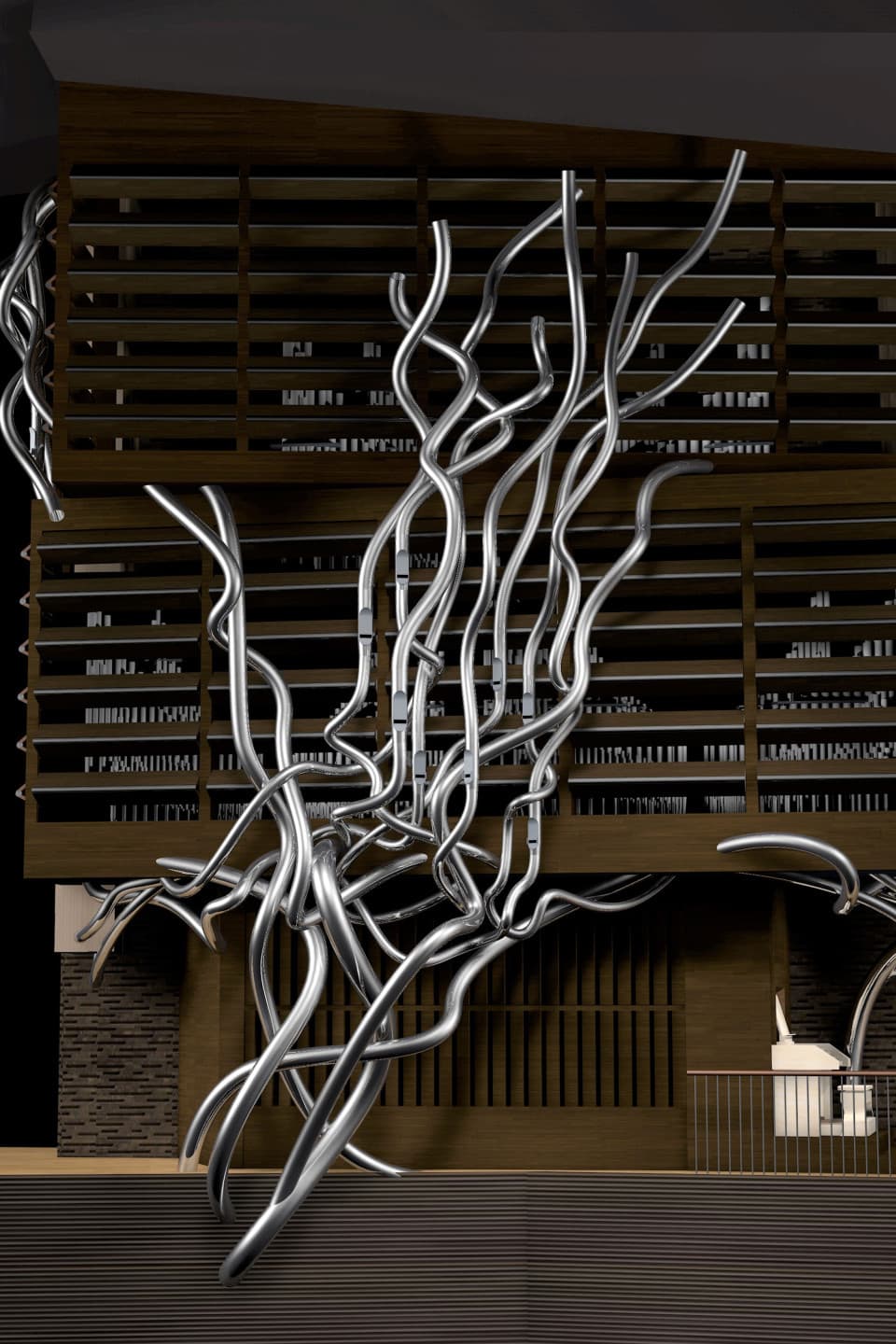
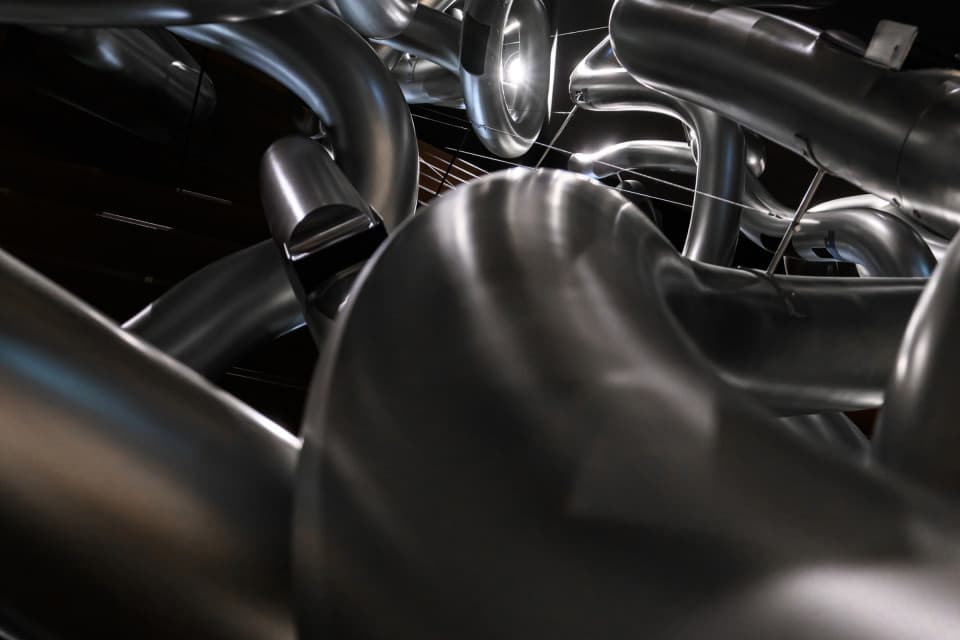
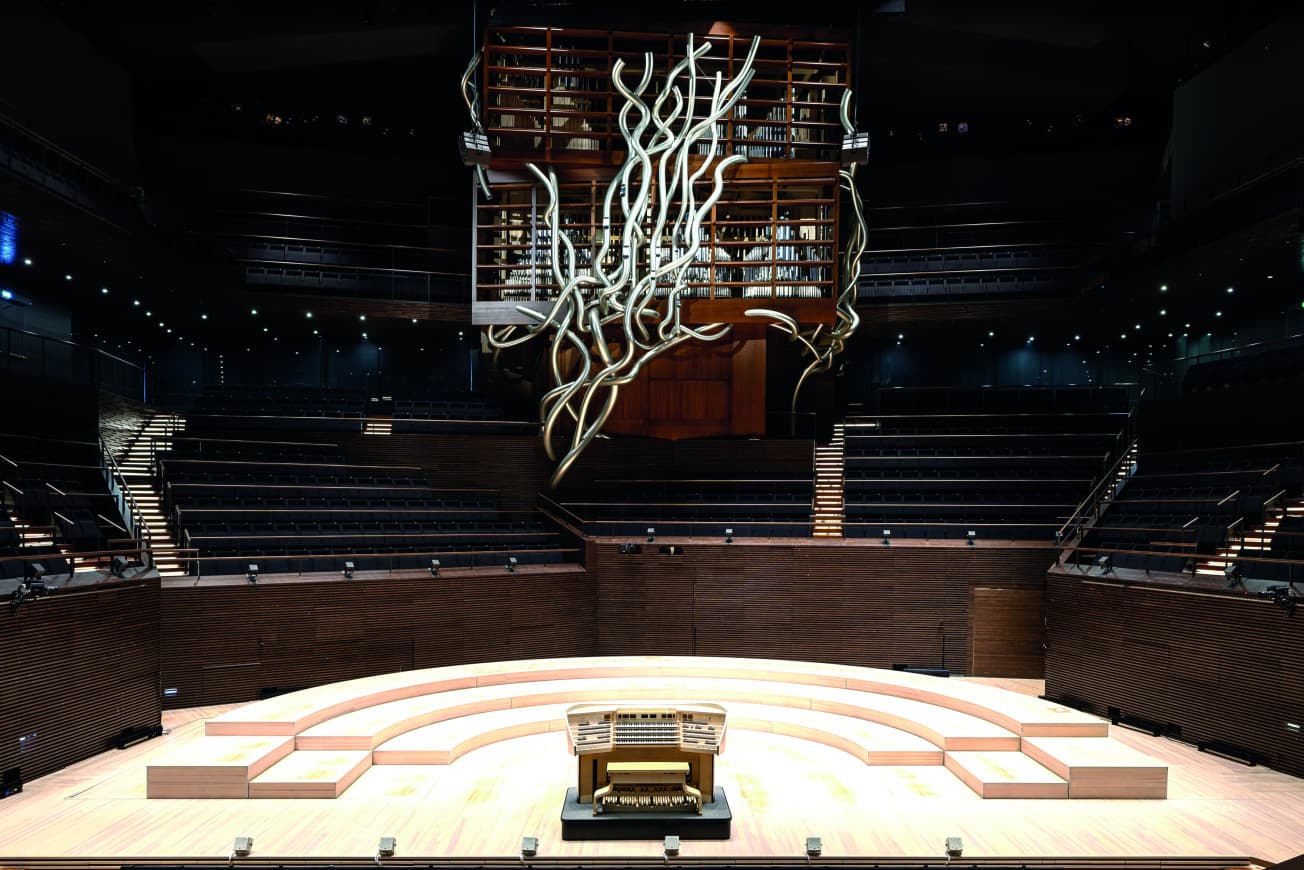
Diocesan Conservatoire for Church Music, Vienna (AT)
The Diocesan Conservatoire had long wanted an organ on which especially symphonic organ music could be played in lessons, practice sessions and class concerts. This wish was fulfilled with the new Rieger organ in the Conservatoire’s concert hall: The instrument has several very characteristic 8' stops on three manuals and pedals; moreover, the organ’s design was conceived without metal pipes in the facade. This is unusual, but extremely useful for a teaching and practice organ.
The exteriors of the wooden pipes are more robust than metal pipes, and as they stand at ground level, they also hold back a part of the sound, so that one can play for a long time in the small room with powerful registrations.
The coloured pipe shades, which represent sound waves, form a visual focal point.
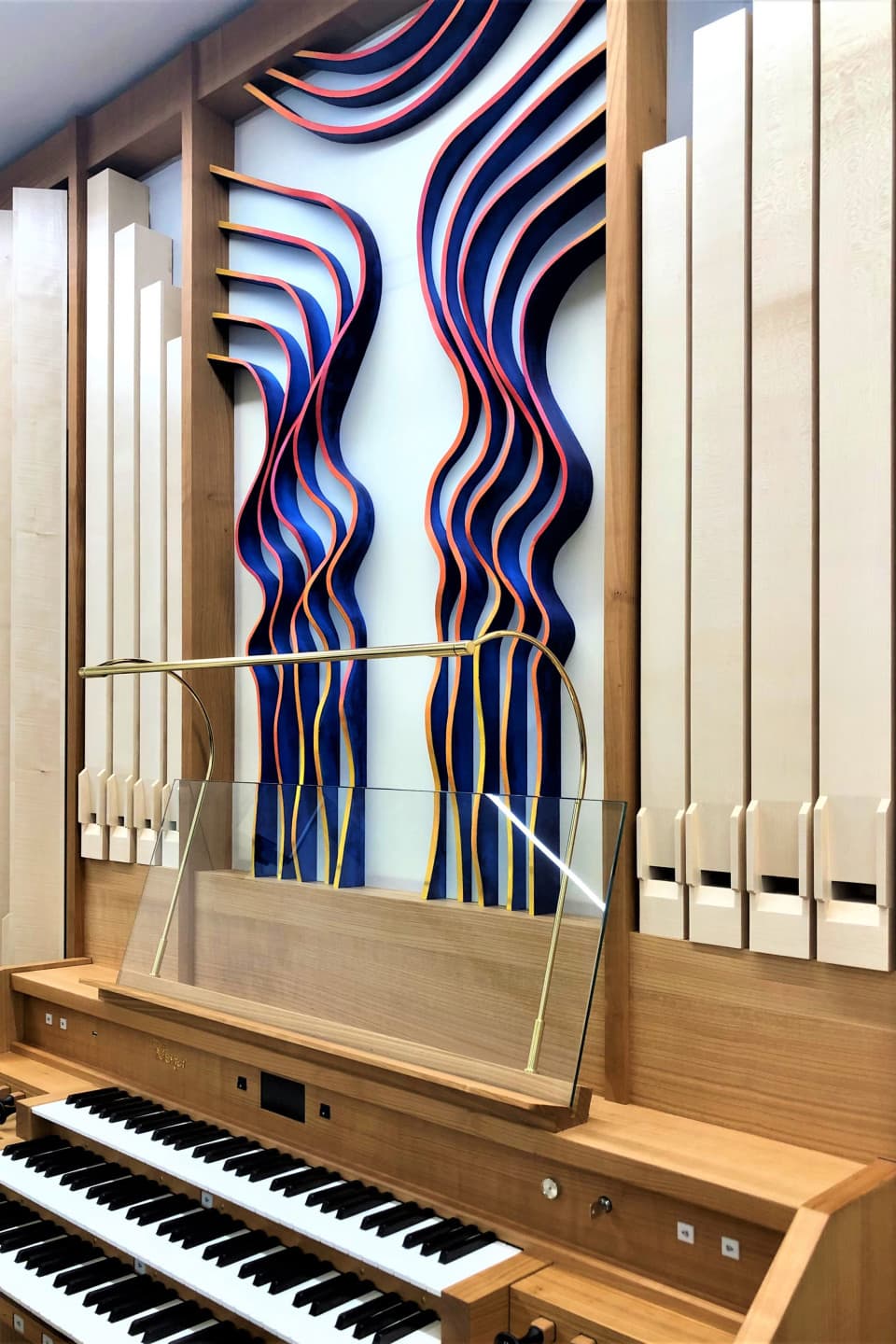
Cathedral of Our Lady, Luxembourg (LU)
The cathedral organ built by Georges Haupt in 1938, with its great German-Romantic tonal potential, was restored tonally by our team in 2021/22 and technically almost completely rebuilt. In order to ensure better accessibility, the Rieger diaphragm windchests, developed by us, were used, as their characteristics are entirely in line with the style of the time in which the organ was initially built. In addition, we reconstructed several stops that had been removed over the past few decades, and reorganized their composition.
We have also added another positive division on the northern balcony, as well as a second (mobile) console, in which the stop tabs and their arrangement copy the gallery console; however, with a modern, innovative, case design.
Since November 2022, the organ, now with 100 stops on 4 manuals and pedals, has been impressing audiences with its full and warm splendour.
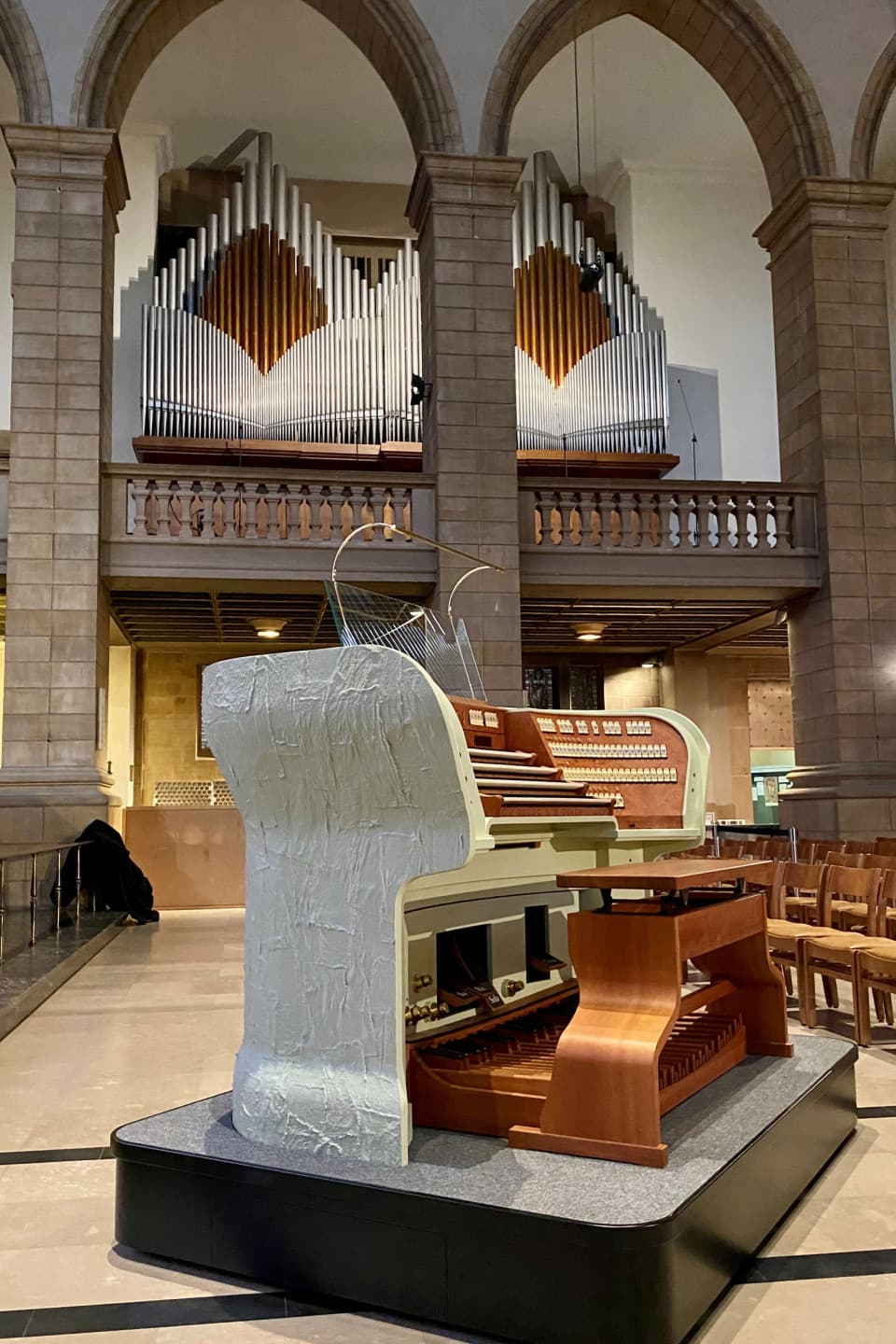
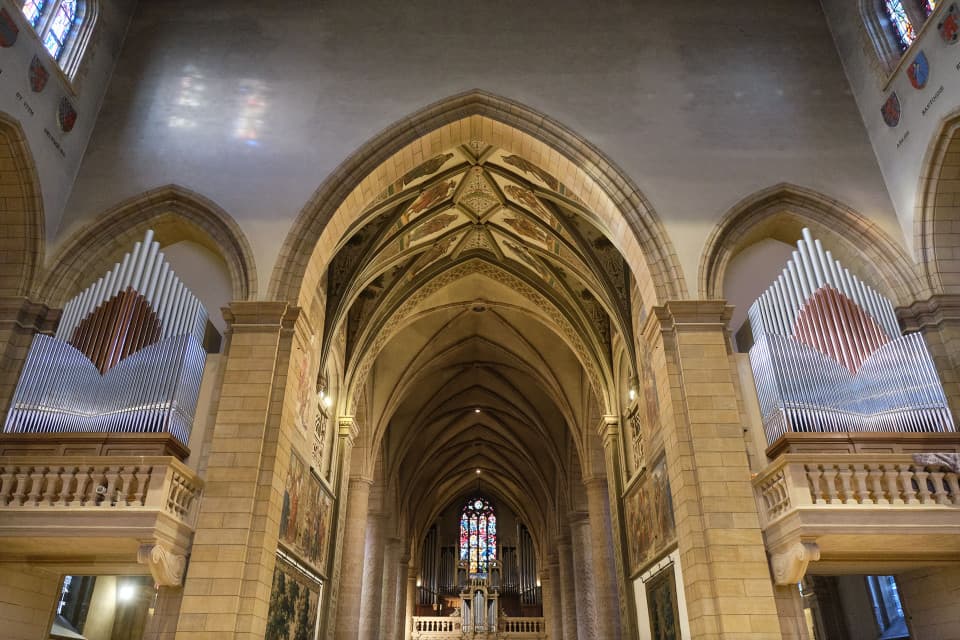
Culture Church Geilo (NO)
The Cultural Church is located on the outskirts of the winter sports resort of Geilo, which is located in southern Norway in the immediate vicinity of two national parks. The building, which was erected as a sculpture of wood, glass and concrete, requires a particularly diverse and musically colourful instrument; with a clever specification, sensitively voiced, and with an individual artistic design.
Rieger Orgelbau built a two-manual organ with 23 stops for the church building, designed by architect, Jorun Westad Brusletto. With its façade pipes freely arranged in circular whirls, which imitate the form of the building and in which the coloured windows are reflected, the organ forms a visual highlight in the church interior. Depending on the various cultural events, from concerts and dance to theatre, the organ can be used in many ways and thus greatly enriches the tonal dimensions of the cultural church.
